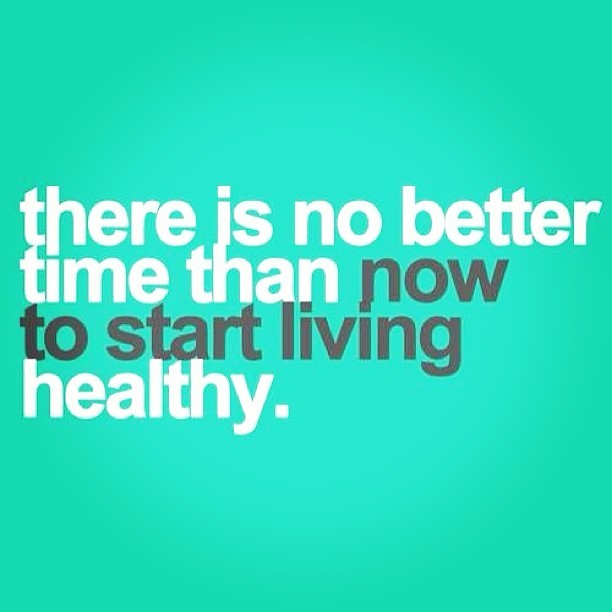
The skin is the largest organ in the body. It regulates the temperature and protects you from diseases. However, there are some do's and don'ts of skin care. Learn more about skin care. It might surprise you to discover how valuable your skin really is. Read on to discover how skin care can benefit your health. Sunscreen should be applied every day.
There are some things you should know about healthy living
A healthy lifestyle is essential! You don't have to eat too much or eat junk food. Eat a wide variety of fresh foods and stay away from processed foods. These processed foods are loaded with chemicals, preservatives as well as fats, artificial colours, and other harmful substances. Consider incorporating fresh fruits and veggies into your daily meals. Vitamins, supplements, and healthy eating habits are great ways to keep your body fit and healthy.
The largest organ in our body is the skin
Your skin is the largest organ of your body. It performs many important functions. There are three layers to the skin. The epidermis, which is the outermost layer of skin, has dead cells. It is constantly flaking and being washed off. New cells are created inside by the epidermis, which is made up of cells that move up from the lower layer and then die as they go upward. The entire process takes approximately 28 days. You should also make sure to moisturize your skin daily and wear sunscreen to protect it from harmful UV rays.

The skin is made up of water, protein, and fats. It regulates body temperature, and also contains nerves. It is the largest organ in the body, with eleven miles of blood vessels. It is very important and requires healthy living tips in order to keep it beautiful and healthy. It protects you from the sun and rain. You can have glowing skin and healthy skin by treating it well.
It regulates temperature
The hypothalamus is located in the brain and is responsible for the complex set of activities related to temperature regulation. It balances body fluids. Maintains salt concentrations. Controls the release and control of chemicals that control temperature. To maintain body temperature, the hypothalamus coordinates with many parts of your body, such as sweat glands and blood vessels. This information enables the hypothalamus to regulate body temperature.
Animals will reduce their metabolism to conserve heat if the temperature is too high. Torpor is a way for animals to survive the cold and frosty nights. A feedback system that includes a modulator effector and stimuli is used to regulate biological temperature. The system works to maintain equilibrium between temperature, other elements of the organism and their homeostasis.

It protects you from disease
"Vaccine" refers to any substance designed to protect against certain diseases. The majority of these medications use genetically weakened pathogens. The smallpox virus, for example is used to strengthen its genetic material. This weakened virus is called a "live attenuated" or "live-attenuated virus. But is it safe to use? How long is it effective in protecting you against infection?
FAQ
What's the difference between a virus & a bacterium?
A virus can be described as a microscopic organism that cannot reproduce in another cell. A bacterium is an organism that splits itself in two. Viruses are small, around 20 nanometers in size. Bacteria are much larger, at 1 micron.
Viruses are often spread through contact of infected bodily fluids like saliva, urine or semen. Bacteria are often spread via direct contact with contaminated surfaces or objects.
Viral infections can also be introduced to our bodies by a variety of cuts, scrapes or bites. They may also get into the body through the nose and mouth, eyes, ears or rectum.
Bacteria can enter the body through wounds. They can also enter our bodies from food, water, soil, dust, and animals.
Both viruses and bacteria can cause illness. But viruses do not have the ability to multiply within their hosts. So they only cause illnesses when they infect living cells.
Bacteria can cause illness by multiplying in the body. They can even invade other parts of the body. We need antibiotics to get rid of them.
How to measure bodyfat?
A Body Fat Analyzer is the best way to measure body weight. These devices are used for measuring the percentage of body fat in people who want to lose weight.
How often do I need to exercise?
A healthy lifestyle requires regular exercise. But, you don't need to spend a specific amount of time exercising. Finding something that you love and sticking with it is the key.
When you exercise three times per week, aim for 20-30 minutes moderate intensity. Moderate intensity means that you will still be working hard even after your workout is over. This type of exercise burns approximately 300 calories.
Walking is a great option if you are a keen walker. You can do 10-minute walks four days per week. Walking is easy on the joints and has low impact.
You can also run for 15 minutes, three times per week. Running is a great exercise to build muscle tone and burn excess calories.
Begin slowly if your are not used to working out. Begin with 5 minutes of cardio every other day. Gradually increase the time you do cardio until your goal is reached.
What are 10 healthy habits you can adopt?
-
Every day, eat breakfast.
-
Don't skip meals.
-
You should eat a balanced diet.
-
Get lots of water.
-
Take care your body.
-
Get enough sleep.
-
Avoid junk foods.
-
Do some form of exercise daily.
-
Have fun
-
Make new friends.
What are the ten best foods to eat in America?
These are the 10 best foods to try:
-
Avocados
-
Berries
-
Broccoli
-
Cauliflower
-
Eggs
-
Fish
-
Grains
-
Nuts
-
Oats
-
Salmon
How can I live my best everyday life?
It is important to identify what makes you happy. Once you have a clear understanding of what makes you happy you can go backwards. You can also ask other people what they do to live the best lives possible every day.
Dr. Wayne Dyer's book "How to Live Your Best Life" is also available. He talks about finding happiness and fulfillment in all aspects of our lives.
How does an antibiotic work?
Antibiotics can be used to kill bacteria. Antibiotics are used to treat bacterial infections. There are many types of antibiotics. Some are administered topically, while others can be taken orally.
Many people who have been exposed can be prescribed antibiotics. An oral antibiotic might be prescribed to someone who has been exposed to chicken pox. This will prevent the spread of shingles. Or, if someone has had strep throat, he or she might receive an injection of penicillin to help prevent pneumonia.
Doctors should prescribe antibiotics to children. Children are at greater risk of developing side effects from antibiotics than adults.
The most common side effect of antibiotics is diarrhea. Other side effects that could occur include nausea, vomiting and dizziness. These symptoms generally disappear once the treatment has finished.
Statistics
- WHO recommends reducing saturated fats to less than 10% of total energy intake; reducing trans-fats to less than 1% of total energy intake; and replacing both saturated fats and trans-fats to unsaturated fats. (who.int)
- The Dietary Guidelines for Americans recommend keeping added sugar intake below 10% of your daily calorie intake, while the World Health Organization recommends slashing added sugars to 5% or less of your daily calories for optimal health (59Trusted (healthline.com)
- WHO recommends consuming less than 5% of total energy intake for additional health benefits. (who.int)
- According to the Physical Activity Guidelines for Americans, we should strive for at least 150 minutes of moderate intensity activity each week (54Trusted Source Smoking, harmful use of drugs, and alcohol abuse can all seriously negatively affect your health. (healthline.com)
External Links
How To
What does the term "vitamins" mean?
Vitamins are organic substances found naturally in food. Vitamins help us absorb nutrients from foods we eat. Vitamins cannot come from the body so food must provide them.
There are two types vitamins: water soluble or fat soluble. Water soluble vitamins dissolve easily in water. You can find vitamin C,B1 or thiamine, B2 or riboflavin and B3 or niacin, B3/niacin, B6/pyridoxine, folic Acid, biotin and pantothenic Acid as examples. Fat soluble vitamins are stored in the liver and fatty tissue. You can find vitamin D, E K, A, beta carotene, and other fat-soluble vitamins.
Vitamins are classified based on their biological activity. There are eight major vitamin groups:
-
A - essential for normal growth and maintenance of health.
-
C is important for nerve function and energy production.
-
D – Essential for healthy teeth, bones and joints
-
E - Required for good vision & reproduction
-
K - essential for healthy muscles, nerves, and bones.
-
P - Vital for strong bones and teeth.
-
Q - Aids digestion and iron absorption
-
R – Required for the formation of red blood vessels.
The recommended daily intake (RDA), of vitamins varies with age, gender and physical condition. The U.S. Food and Drug Administration has established the RDA values.
For example, the RDA for vitamin A is 400 micrograms per dayfor adults 19 years or older. However, pregnant women need 600 micrograms per day because it is important for fetal development. Children ages 1-8 require 900 micrograms per day. For infants younger than one year, 700 micrograms are required daily. However, this number drops to 500 micrograms each day for children aged 9-12 months.
Children aged between 1-18 years require 800 micrograms of sugar per day, while overweight children need 1000 micrograms. Children who are underweight receive 1200 micrograms every day to meet their nutritional requirements.
Children ages 4-8 years who have been diagnosed with anemia need 2200 micrograms per day of vitamin C.
2000 micrograms is the minimum daily intake for adults over 50 years old to maintain good health. Breastfeeding or pregnant women require 3000 micrograms per daily due to higher nutrient demands.
Adults over 70 need 1500 micrograms daily, as they lose 10% of their muscle every ten years.
Women who are pregnant and lactating need more nutrients than the RDA. Pregnant women require 4000 micrograms daily during pregnancy, and 2500 micrograms every day after birth. Breastfeeding mothers need 5000 micrograms per day when breast milk is being produced.